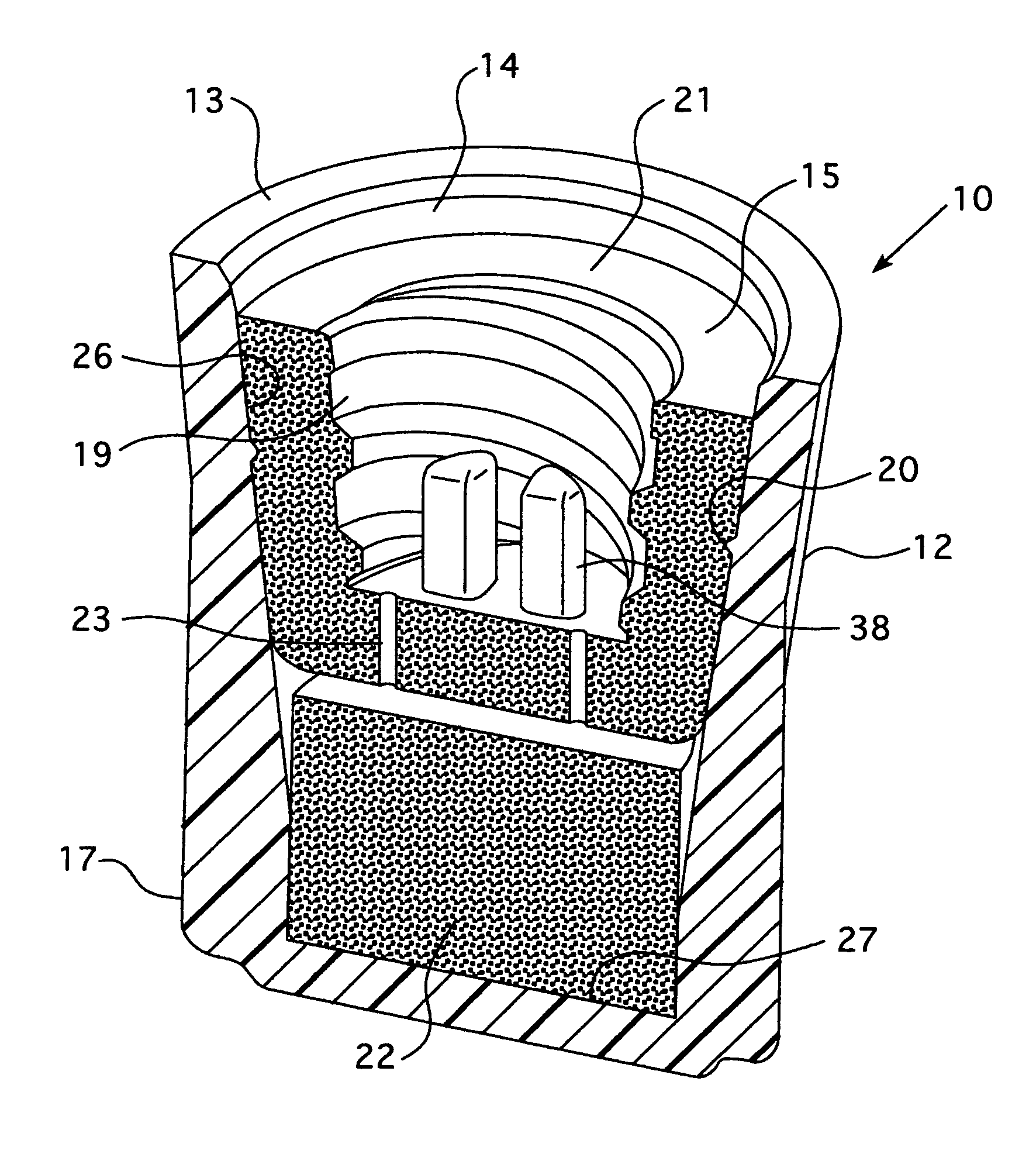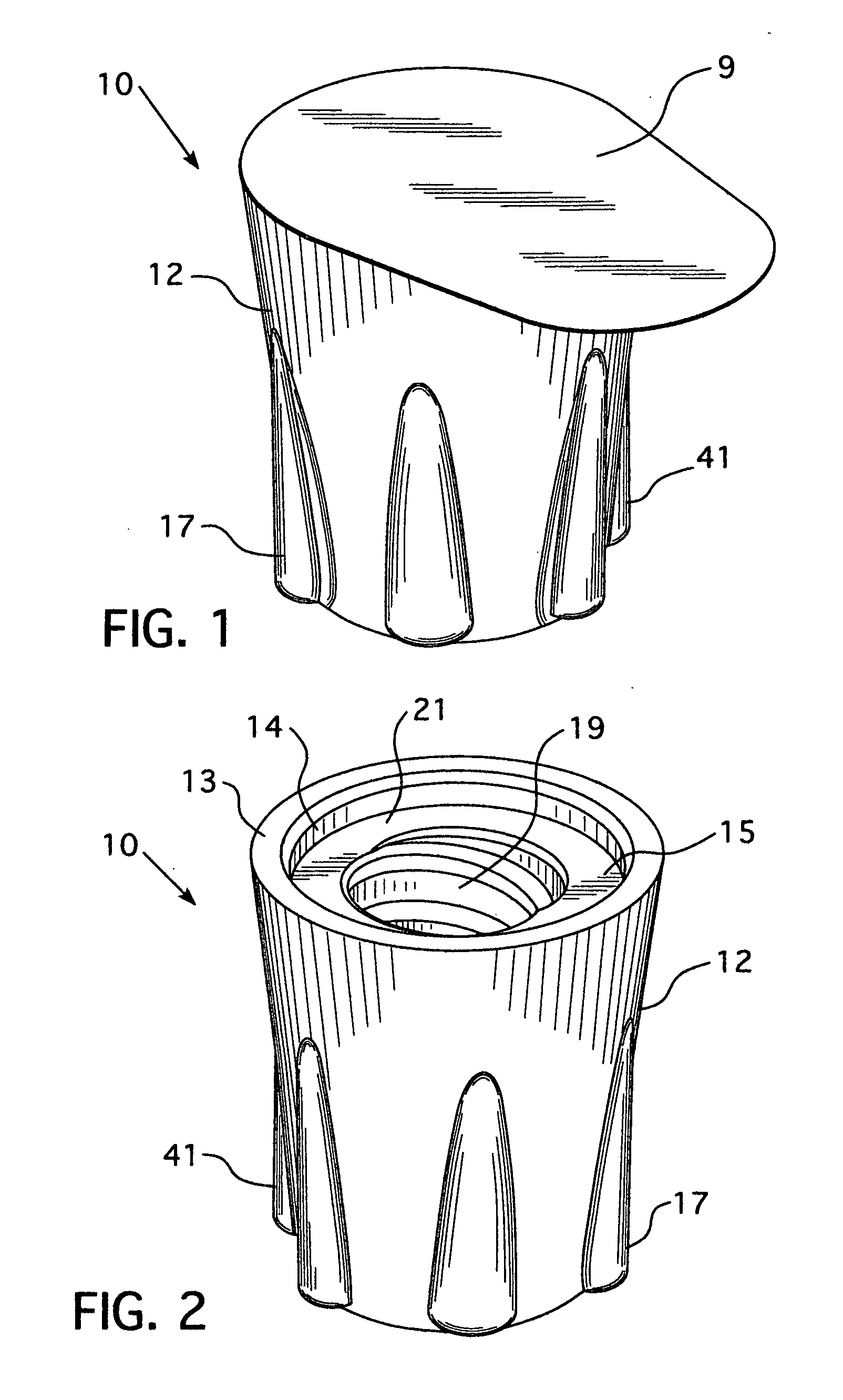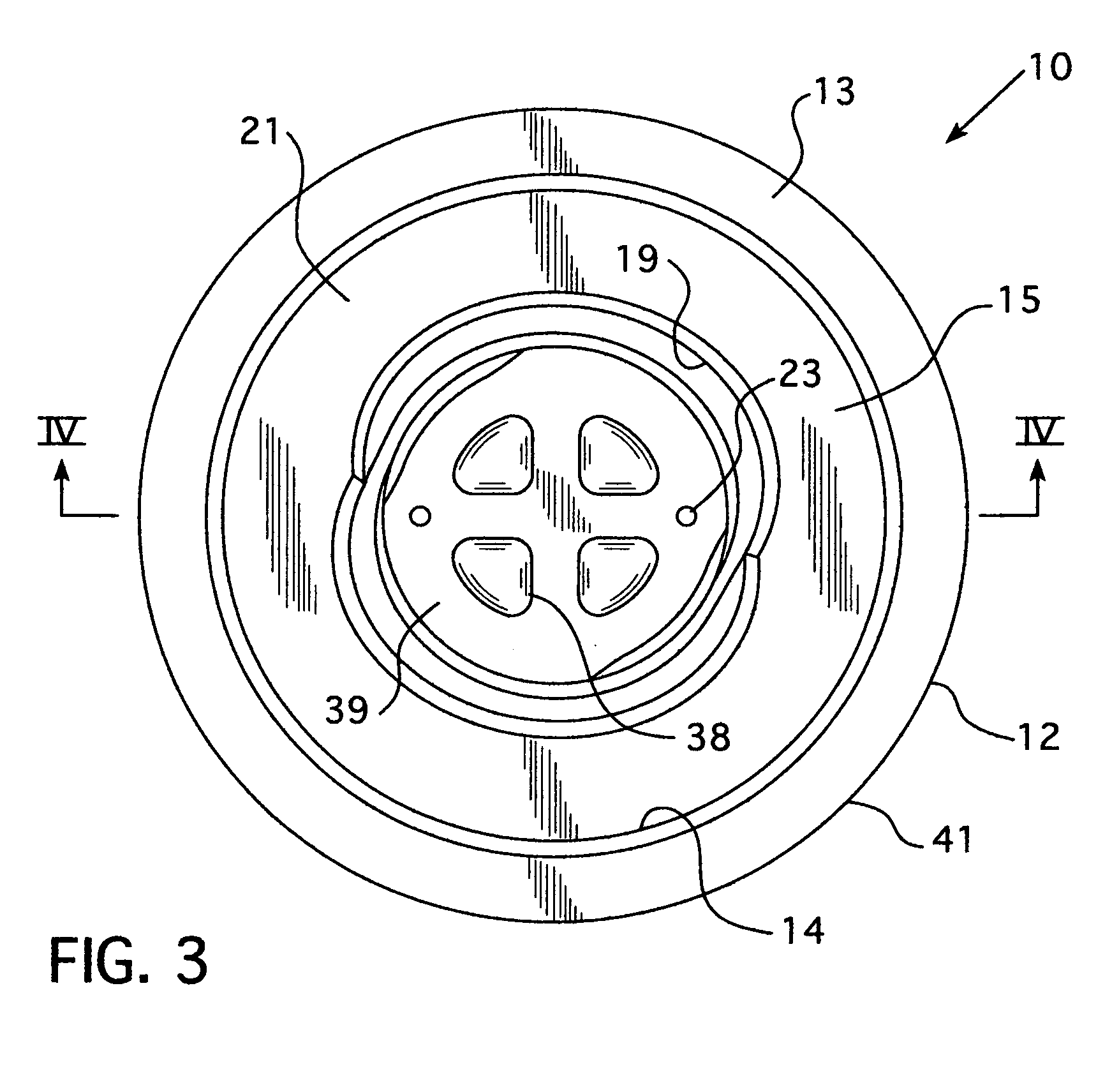Apparatus and method for sterilizing a tubular medical line port
a tubular medical line and apparatus technology, applied in the direction of cleaning process and apparatus, other medical devices, flexible article cleaning, etc., can solve the problems of medical equipment becoming a danger to patients, constant threat to medical equipment, surrounding contaminated surfaces,
- Summary
- Abstract
- Description
- Claims
- Application Information
AI Technical Summary
Benefits of technology
Problems solved by technology
Method used
Image
Examples
Embodiment Construction
[0033]Referring first to the embodiment illustrated in FIGS. 1 through 6, the apparatus 10 of the present invention is provided for sterilizing tubular medical line port (IV port) 11, as shown in FIGS. 5 and 6. In FIG. 1, the mouth of apparatus 10 is sealed off with peel-off cover seal 9. The apparatus 10 is comprised of a cap 12 having an upper open distal end 13 with a cavity 14 therein which is dimensioned to receive outer disinfectant-impregnated scrubbing member 15 and the medical line port 11 therein for sterilization. Outer disinfectant-impregnated scrubbing member 15 is coaxially received in cavity 14 and has a socket 19 therein dimensioned for engaging exterior side surfaces 16 of tubular medical line port 11 when inserted into the cavity 14 and scrubbing member 15. Scrubbing of the exterior surfaces 16 is accomplished by rotating the cap 12 by grasping the rib protrusions 17 in one hand while holding the female medical line port 11 in the other hand. Outer scrubbing member...
PUM
 Login to View More
Login to View More Abstract
Description
Claims
Application Information
 Login to View More
Login to View More - R&D
- Intellectual Property
- Life Sciences
- Materials
- Tech Scout
- Unparalleled Data Quality
- Higher Quality Content
- 60% Fewer Hallucinations
Browse by: Latest US Patents, China's latest patents, Technical Efficacy Thesaurus, Application Domain, Technology Topic, Popular Technical Reports.
© 2025 PatSnap. All rights reserved.Legal|Privacy policy|Modern Slavery Act Transparency Statement|Sitemap|About US| Contact US: help@patsnap.com



